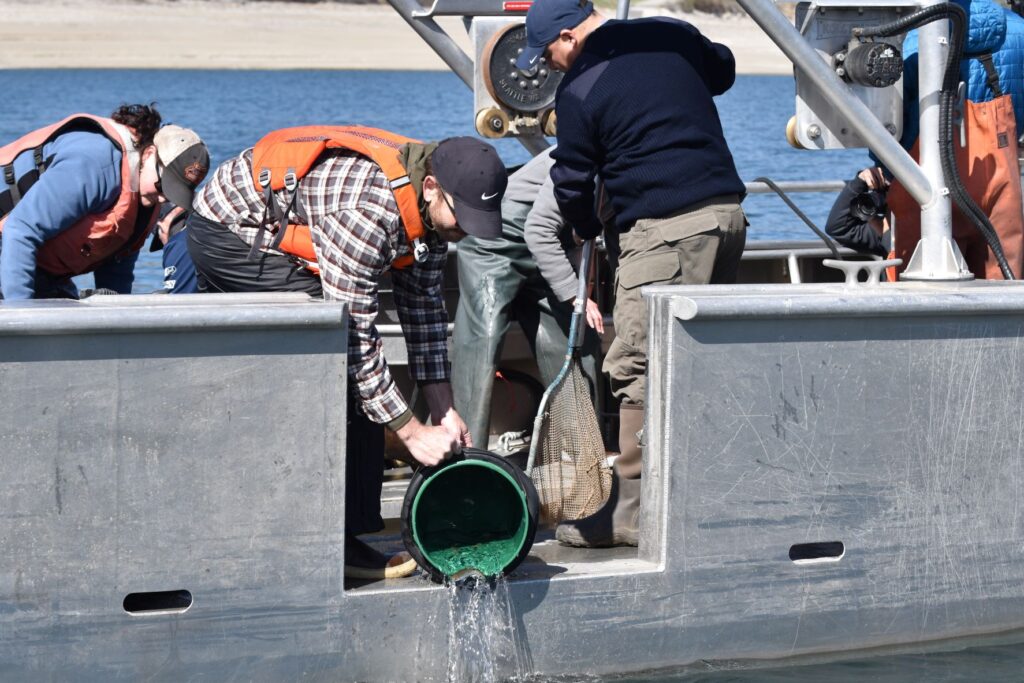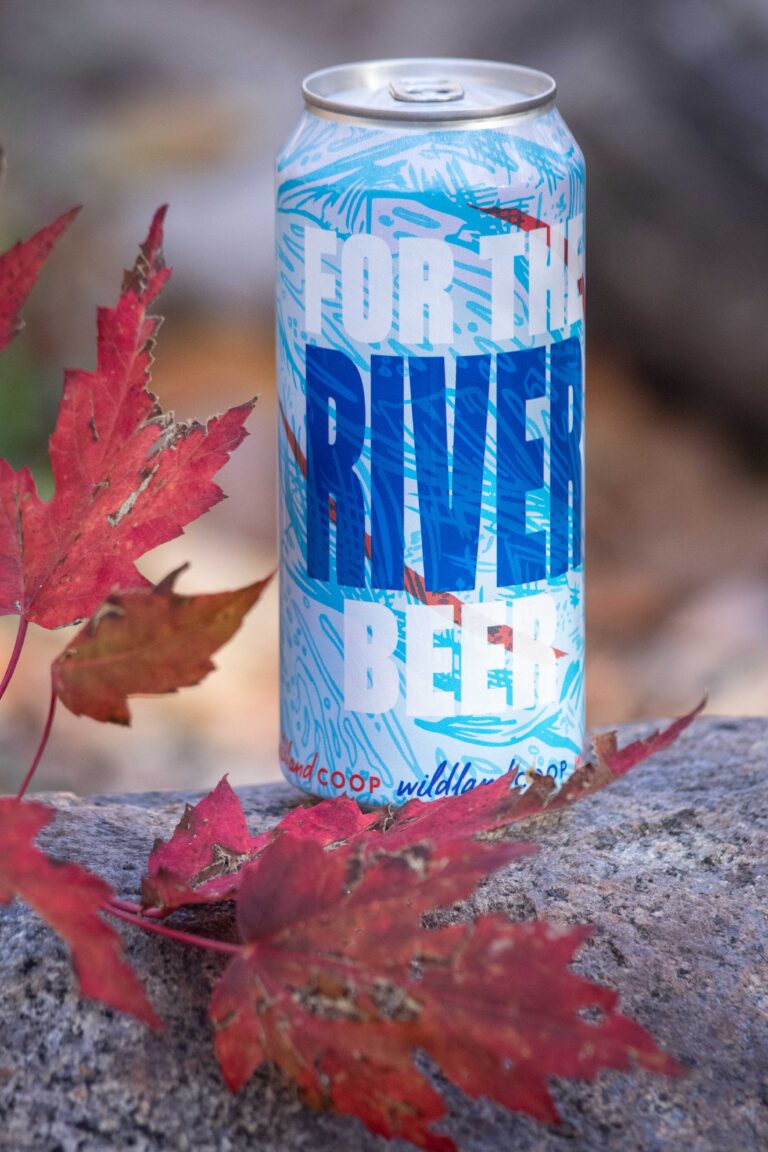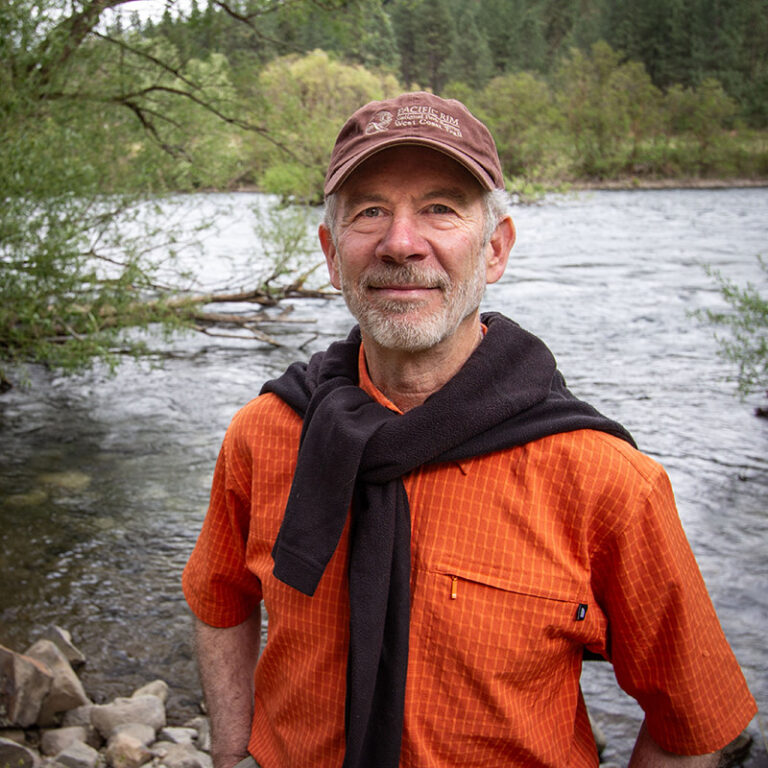During spring 2022, the Spokane Tribe of Indians, Colville Confederated Tribes, and the Coeur D’Alene Tribe, along with help from the U.S. Geological Survey, completed phase two of a 20-year project to reintroduce chinook salmon to the Columbia River.
Chinook salmon are a cultural and ecological keystone species for the rivers of the Inland Northwest. These salmon, among other anadromous, ocean-going fish, were blocked from their historical migration routes with the construction of Grand Coulee Dam in 1942. For regional tribes, chinook were once abundant and important subsistence fish upstream of that dam
Paired with previous adult and juvenile releases, this study will be the first large-scale formal research investigating the behavior and survival of these juvenile fish as they make their way through Lake Roosevelt, passing Grand Coulee and Chief Joseph dams, followed by the successive downstream dams on the Columbia River equipped with fish passage.
This is a truly collaborative process, pooling resources between the three tribes. First, Chinook salmon to be released are raised in the Coeur d’Alene tribal fish hatchery.
Next, the Tribes release juvenile chinook into their waterways: Latah Creek, the Spokane River below Nine Mile Dam, and areas of Lake Roosevelt. Releases are timed so that as the fish move downstream, they will create a larger and larger sample size.
Tribes use two different tracking devices: a passive integrated transponder (PIT tag), like ones used in pets, and an acoustic tag. The PIT tags generate data for the life of the fish as it passes through the dams on the Columbia on its way to the ocean, and then hopefully in 2–3 years on its return as an adult swimming upstream through the dams with fish passage.
According to Colville Confederated Tribal fish biologist Casey Baldwin, “The acoustic study that is occurring this spring is the first large-scale pilot study to evaluate survival in reaches of the blocked area and through the dams, and it will also provide some data on travel times and behavior near the dams.”
Due to size and battery life, acoustic tags will provide data for an average of 80 days. The Tribes share the maintenance of 50 acoustic arrays in Lake Roosevelt.

The acoustic tags can be monitored from approximately 200 meters away of an array, whereas the PIT tags must come within five feet of a reader. The PIT tag readers are located in fish passages on Rocky Reach Dam, near the city of Wenatchee, Wash., and other downstream dams.
For this season, the study has a sample size of 770 acoustic tags and approximately 4,500 PIT tags, released at nine different sites. The Tribes will repeat this study for the next three years.
Although this season marks the first formal study on juvenile chinook behavior and survival, there have been previous adult and juvenile releases for both cultural and research purposes. Releases in both the Sanpoil and the Little Spokane Rivers reveal that habitat above the dams is suitable for successful reproduction.
In the Sanpoil River, the Colville Tribe has confirmed successful spawning through the documentation of redds (spawning nests) and out-migrating juveniles past the dam the following spring.
In August 2021, the Spokane Tribe released 51 adults, 20 with radio tags, in the Waikiki springs area of the Little Spokane and found nine redds, although their surveys were limited due to private property river access.
If landowners along the Little Spokane are interested in helping the reintroduction effort, they can contact Spokane Tribal Fisheries about conducting surveys within their private waterways.
The fish of the Columbia River were and are the cultural touchstone for the Tribes of the Upper Columbia. The salmon that once ran from the streams of northeast Washington and North Idaho to the ocean and back supplied up to 75% of the subsidence diet and were the focus of seasonal gatherings, trade, and ceremonies.
As the late Colville Tribal elder Mary Marchand once said, “If you bring back our salmon, you will bring back our culture.”
Originally published in the May-June 2022 print issue.













